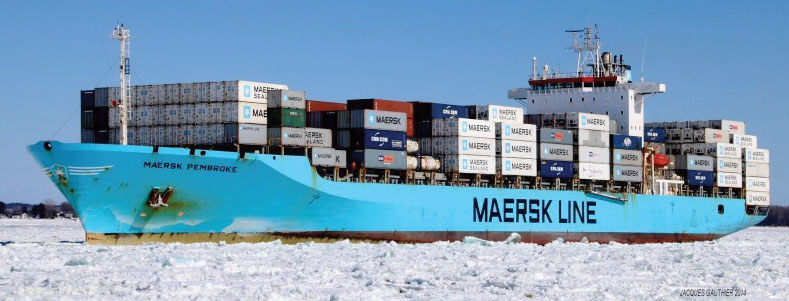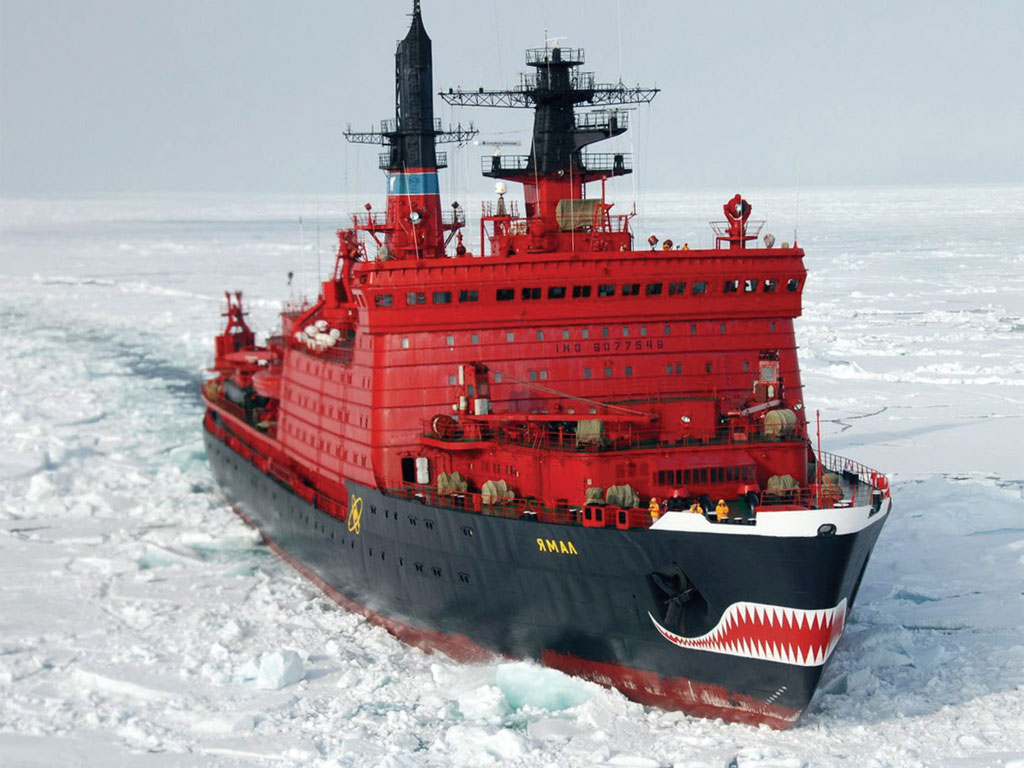In the Arctic, the ice is melting opening up waterways and opportunities.
By Anita Parlow, special to AJOT
International Center for Scholars’ Project on the Polar Code. Parlow is currently advising the Port of Nome, Alaska.
66 Degrees North
As the sea ice melts in the Arctic, with the high North region warming twice as fast than the rest of the planet, attention is increasingly placed on the twin issues of challenges and opportunities.
The Arctic Circle, located at 66 degrees north, has become unpredictable, with hazards and dilemmas that disrupt both daily life and long term planning in a region long identified by its relative isolation, thick and persistent multiyear ice, uncharted waters, winter storms and months of darkness.

Yet, in seeming paradox, the warming and accelerating sea-ice retreat is also creating opportunities for the interlinked subjects of transport and trade. Recent press coverage has highlighted the potential for commercially feasible Arctic shipping routes, with a particular focus on the potential for trans-Arctic voyages that would more closely link, for example, Shanghai to Rotterdam. These and other considerations warrant a closer look.
Arctic Transits
Perhaps the most compelling argument for transit shipping across the Russian or Canadian Arctic coastlines is its shorter route, by forty percent, to travel from Asia to European markets rather than through the Suez and/or Panama Canals. Climate models, show ice-free summers, likely between 2050 and 2070, with the east Arctic shipping lanes such as the Northern Sea Route remaining the most reliable. Earth’s Future reported a brief opening of shorter central routes crossing the North Pole by 2060, using Polar Class 6 ships.
In the past several years, several major global shippers such as the world’s largest shipping company, Denmark’s Maersk and China’s COSCO tested the northern routes to determine their feasibility as an alternative to the southerly transcontinental shipping lanes of the Suez and Panama Canals.

Last year, the Venta Maersk, an ice-class ship capable of operating in unconsolidated ice up to three feet thick, was the first containership to sail the Northern Sea Route – moving from Vladivostok in the East to St. Petersburg. The Maersk, able to carry 3,600 twenty-foot containers, demonstrated that container transit can be done.
A year earlier, Maersk’s main competitor, China’s COSCO, sent about a dozen vessels through the Arctic, including five transit voyages. Using ice-strengthened vessels, both companies succeeded in proving the feasibility of transiting the northern routes, although neither company intends to alter their existing routes – at least not for the present.
The downsides are many. Arctic waters are relatively shallow, unable to support the mega-container ships that are forthcoming. Even with thick bows capable of withstanding batteries of floating or calved ice and hardened propulsion systems, infrastructure is scant in case of need for search and rescue, running aground, or oil spill response.
Further, given that timing is vital to container shipping, the combination of seasonality, unpredictability and high costs to reinforce vessels for ice conditions, all work to dissuade shippers from seriously considering a northern route replacement for container ships. According to Arctic scholar Malte Humpert, the need for “just in time” delivery combined with terminal costs at $80,000 hourly, and, insurance costs likely far higher than for the traditional routes, incentives for container shipping transits are few for the time being. Tero Verauste, the former CEO of the Finnish ice-breaker company, Arctia, and Chair of the Arctic Economic Council, noted additionally, that geopolitics, regulatory and insurance factors also present unknown costs.
Arctic Waters as a Destination
However, the retreating sea-ice has increased the potential for natural resources extraction – oil, gas and mining – whose shipping is generally destinational rather than transit, and does not require tight time schedules.
According to the oft quoted United States Geological Survey (USGS), the Arctic region contains about 30% of the world’s undiscovered gas and some 13% of the world’s undiscovered oil – mostly offshore and accessible. Russia’s vast undiscovered petroleum is estimated between 66 billion tons of oil equivalent (BTOE) – accounting for about 52% of Arctic totals, and Norway, 12%.
The increasing trade in energy and minerals along with the growing availability of Russian ice–breaker support for the projected increases in bulk and break bulk vessels along the NSR suggests that resource shipping is likely to be economically advantageous in the Arctic routes. The Russian Academy of Science reports that Russian natural resources exported to Europe are increasing, with the second largest, and growing, customer being China. Through its Polar Belt and Road initiative, China is also increasingly an investor.
In November, 2018, Arctic Today reported that traffic on the NSR doubled in the past year, surpassing 15 million tons of cargo in eleven months of 2017, with an expectation of a two million ton increase for 2018, with natural resources having increased fivefold since 2014, with primarily Asian destinations.
Port and infrastructure upgrades are vital to Arctic shipping growth – be it along coastal Russia, the United States (Alaska) or Canada’s Northwest Passage. The Russian Federation has indicated that an upgrade of resource development and vessel traffic in the Northern Sea Route (INSR) is among its highest priorities.

Recently, Reuters reported President Putin’s invitation at an Arctic forum meeting in St. Petersburg, for foreign investors to engage in the expansion of port infrastructure in Murmansk and Petropavlovsk-Kamchatsky that would serve the Northern Sea Route. At the same forum, the Russian President asked his government to draw up tax relief plans to encourage investment and “promote the development of the Arctic region.”
The likelihood of increased shipping and the need for greater and improved port and other infrastructure continues to draw opposition by environmental groups concerned about stresses to marine ecology, climate, and limits to subsistence hunting and fishing. While Greenpeace is not likely to be granted access to Russian waters any time soon, the environment–development balance requires far more communication amongst interests by all Arctic nations to protect the rugged, yet fragile Arctic marine environment.
Western sanctions placed heavy limits on Arctic development, yet, commercial activity between Russia and China is projected to increase. Chinese media recently celebrated the nation’s first energy project investment within its Polar Belt and Road Initiative, anticipating that the project will contribute significantly to China’s energy security.
Cooperative initiatives such as the nascent Canadian–Russian ‘Arctic Bridge,’ the increasing Chinese interests in Arctic shipping, natural resources, and science are just some of the variables in a part of the world that is moving from the margins to meaningful integration into global commerce.



